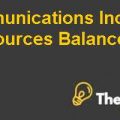Nissan’s Response to the COVID-19 Pandemic Case Study Help
Introduction
The study of (Business Continuity plan) by Nissan Motors within the context of its production processes, present financial status, and organizational principles forms the core of the entire case. The story illustrates the difficulties Gupta encountered in controlling the rapidly expanding constraints brought on by the Covid-19 epidemic. The study covers the specific regions in India where Nissan needs to find a different supplier in the event of a pandemic, as well as the strengthening of the company's business continuity plan. The group in India came up with four ideas that helped the business lessen disturbances that came from the China region and specifically affected Nissan and its suppliers' production processes. (Ananth Raman, 2021)
Key Judgments
In January 2020, Ashwani Gupta would assume the position of COO at Nissan Motors. The Covid-19 outbreak began to affect company operations after a few weeks. The fundamental factor in establishing stability in Nissan's supply chain process is thought to be the company's business continuity plan, or BCP. In contrast to its rivals in the sector, Nissan Motors was helped by the (BCP) to lessen the effects of specific circumstances, primarily natural disasters, all over its supply chain that quickly recover from the interruptions caused by such disasters. (McKinnon, 2021)
Substantiation
Supply Chain Strategies of Nissan
The prior disasters that mostly impacted Nissan's entire market includes 2011 earthquake the most significant one. The supply chain and the expansion of the company were both affected by the unpredictability of the earthquake and flooding. Additionally, a company's supply chain is a key component and is crucial in the delivery of services and goods to customers. This Nissan Motors Business Continuity Plan is a very thorough and well-organized structure that aids and supports the business in responding to any disturbance and disruption in its entire business operations brought on by unforeseen occurrences like the pandemic. This plan is implemented by Nissan as part of its risk management strategy, and it is clearly stated so that the business can resume operations as soon as a disaster or disruption occurs. The company's prior experience with calamities, such as earthquakes or floods, served as the foundation for this plan (BCP), which finally led the company to implement it.
Nissan, as opposed to Toyota and Honda, quickly recovered from the earthquake calamity in 2011 by employing the BCP procedure. After six months of this catastrophe, Nissan was able to increase market share, which analysts recognized. Through this approach, Nissan created more consistent resilience in the manufacturing process. Nissan promptly conducted imitations for the disaster scenarios in order to strengthen the business continuity plan during the time of the earthquake crisis, and this simulation training is mostly focused upon that compounded (Tonankai, Tokai, and Nankaido) earthquakes. (Schmidt, 2013)
There are various other primary strategies that the company implements for effective supply chain process. For Instance, the operations are spread in different regions or countries, it implements centralization strategy of control. Nissan's operations are widely spread across regions all around the globe. It helps the company to enjoy the benefits of higher diversification. Through this strategy the company is able to allocate resources from its differently operating regions, based on the feasibility of that resource allocation.
For example, to match customer needs, Nissan determined which models needed features like integrated GPS and committed resources appropriately. Since they really not had the margins and buyers were prepared to buy without the GPS, other low-end models did not get their share of the available GPS. During the pandemic, the company was able to solve the combinators issue because of its resources’ diversification.
The company encountered problems with the production of combi meters, which had an impact on the company's market and brand recognition. Because of the reason that the company’s operations were widely allocated, the corporation had four choices for resolving the combi meter production. Moreover, the company has a very effective communication process.
Whenever there arises any uncertainty event the company immediately respond to it through its internal and external communication channels. During 2011 earthquake, all the regions were well aware of the events taking place in Thailand and Japan. This helped them to influence and combat several supply chain issues of the company.
In the appendices we have determined in detail about the strategies that were being acquired by the company during the pandemic and pre-pandemic. Furthermore, it is also shown that because of these strategies the company was able to attain Regional Visibility, Effective allocation of Supplies and Production efficiency before the pandemic whereas, during the pandemic, these strategies helped the company to have backup sourcing and alternate transportation routes..................
This is just a sample partial case solution. Please place the order on the website to order your own originally done case solution.













